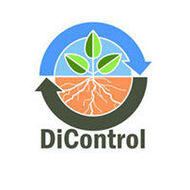The Use of Features from Fluorescence, Thermography, and NDVI Imaging to Detect Biotic Stress in Lettuce (2018)
Sandmann M., Grosch R., Graefe J.
Plant Disease, 102 (6), 1101-1107
doi:10.1094/pdis-10-17-1536-re
Abstract
Fluorescence, normalized difference vegetation index, and thermal imaging are three frequently used nondestructive methods to detect biotic stress in plants. Due, in part, to the inconsistent results reported in the literature and the lack of measurements on the whole-plant scale, we tested the suitability of a wide variety of variables obtained using these three imaging methods to classify young plants into biotically stressed and nonstressed plants. To this end, we applied the model plant–pathogen system lettuce–Rhizoctonia solani. The relevant data from each image and plant (healthy and diseased) was extracted semiautomatically using sophisticated image processing algorithms. This method enabled us to identify the most appropriate variables via discriminant function and logistic regression analysis: photosystem II maximum quantum yield (Fv/Fm) and fluorescence decline ratio can be used to classify variables with an error ≤0.052. Lettuce seedlings with an Fv/Fm ratio > 0.73 were consistently healthy. In some cases, it was possible to detect infection prior to the appearance of symptoms. Possibilities to transfer the method to horticultural practice are discussed.
